#snakes of australia
Text
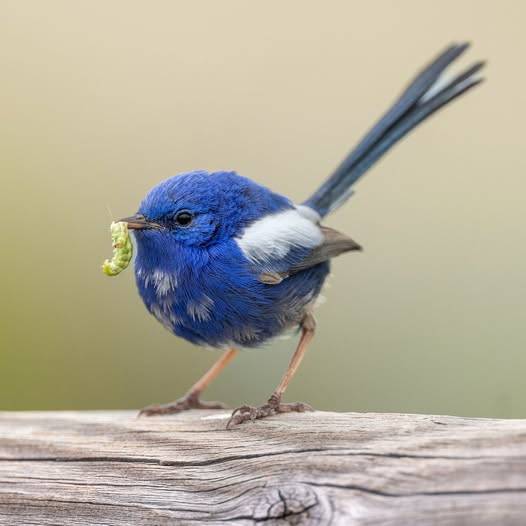
White-winged Fairywren (Malurus leucopterus), EAT A TASTY BUG!!!, male, family Maluridae, order Passeriformes, Mindarie, Western Australia
photograph by David Luu Photos
1K notes
·
View notes
Text


Albino japanese rat snake (Elaphe climacophora) with some pink for the cherry blossoms 🌸
Did you know rat snakes are located in many parts of America as well as Canada, Russia, Europe, Japan and Korea?
You do now :P
アルビノ青大将 と桜色🌸
しっていますか? 青大将がアメリカ、カナダ、ロシア、エウロパ、にほんと韓国で見つけることができます。面白いね~
#art#アート#sciart#creative#illustration#解剖学#herpetology#snake#へび#reptile#爬虫類#snakesofinstagram#ratsnake#australia#青大将#snakemorphs#albino
200 notes
·
View notes
Photo

The range of the Inland Taipan, the world’s most venomous snake. One bite possesses enough lethality to kill more than 100 adults. It is extremely fast and can strike instantly with extreme accuracy, often striking multiple times, and it envenomates in almost every case. No human deaths on record.
283 notes
·
View notes
Text
"More scared of you" - Space Orcs
"it's always more scared of you than you are of it."
"oh that's a shark- they're apex predators in our oceans. They have rows of razor sharp and replaceable teeth, they prefer to attack from underneath, they can be very territorial and some kill for fun, and they have been around longer than our trees. But don't worry! If you ever see one swimming you can always just give it a light smack on the nose- it's always more scared of you than you are of it!"
"Aye, that there's a Black Widow. 'ey get a bad rep, really, there are more dangerous lil spiders out there, but this one's famous 'cause it can kill a human in a single bite, innit. Venom's a nasty thing, and they've also developed a toxin that can liquify their prey so 'ey can slurp 'em up to get their nutrients. They build these webs to catch and net insects and lie in wait to wrap it up alive like a burrito. Aye, but dunna worry! If ya see one, ye can always wave and stomp around to bother it inta leavin- thing is always more scared of you than you are of it."
"Oh that there? Oh yes, that's called a snake! They're little reptiles with no legs that have belly muscles that move them along so they can hunt! A good bit of them are venomous, meaning they inject venom through fangs and into the bloodstream to kill prey. The fastest snake is the black mamba, which can reach speeds up to 23 miles an pur! Some can also swim, and most venomous ones can incapacitate and even kill humans! But if you see one, stomping and yelling can often scare them off. They're always more scared of you than you are of them!"
Vistrigil stared at the human crew mates, the little hairless, clawless, tentacle-less things, and wondered how in every galaxy and star those animals could be afraid of a human.
"aye, but have I ever told you about the bloody ROOS? MATE, those things have BALLS."
#space orcs#space australia#humans are strange#humans are space oddities#humans are crazy#humans are insane#humans are weird#tw snakes#snake#venom snake#snakes of tumblr#sharks#i love spiders#tw spiders#arachnids#cute bugs
1K notes
·
View notes
Text

Boop his snoot if you dare 🐍🐍🐍
#boop the snoot#snake#cute#reptile#wildlife photography#animal#photography#zoo#australia#wildlife#australian reptile park
80 notes
·
View notes
Text
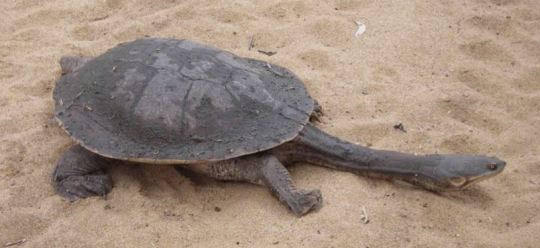
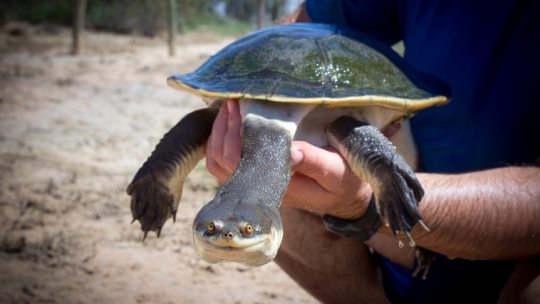

Abroad with the Broad Shelled Turtle
Chelodina expansa, more commonly known as the broad shelled turtle, is one of the largest freshwater turtles in Australia. The length of their shells can reach up to 50 cm (19.6 in), and their neck accounts for an additional 60-80% of their total length. Because of this length, C. expansa tucks its head in sideways as opposed to pulling it directly into its shell. At maximum, females reach a mass of 6 kg (13.2 lbs), while males only typically weigh about 4 kg (8.8 lbs). The top of the shell, or carapace, is dark brown or green, while the underside is a light cream; the same is true for the broad shelled turtle's head, neck, and legs. The feet are webbed, and have large claws which help adults to dig or fend off predators.
While they spend the winter buried in the mud, the broad shelled turtle is most active during the summer months, from November to March. During this time they are almost entirely aquatic, rarely emerging from the water even to bask. This species lives throughout the river basins of eastern Australia, and can be found in rivers, dams, lakes, and wetlands with plenty of vegetation cover. C. expansa is entirely carnivorous, feeding on crustaceans, aquatic insects, fish, and frogs via ambush, and carrion whenever it can find it. To locate prey, they have a keen sense of smell. Adults are not usually predated upon due to their thick shells and sharp claws, but eggs and juveniles are often prey for foxes, dingos, birds, rakalai, and large fish.
C. expansa nests in the winter, beginning in late February or March. Outside the mating season, individuals are generally solitary, but aggressive territoriality has not been observed. When mating time roles around, males seek out females to mate with; following the encounter, the female climbs out onto the bank and digs a nest for a clutch of anywhere from 5 to 28 eggs. To seal the nest, she then slams her body into the re-piled sand and mud, compacting it into a plug that will remain intact until the following year.
Incubation takes about 360 days, though some nests have been recorded as hatching at 500 days; this process is exceptionally slow due to the two periods of diapause, or developmental delays, that embryos pass through in order to survive the winter. Juveniles hatch in the spring, and emerge from the nest at the first heavy rain. It's unknown how long these turtles can live in the wild, but given their slow growth rate and adult invulnerability it's likely that they can live in excess of 20 years.
Conservation status: The IUCN consideres the broad shelled turtle to be Near Threatened, due primarily to habitat loss and high rates of nest predation by introduced foxes.
If you like what I do, consider leaving a tip or buying me a kofi!
Photos
Claire Treilibs
Catherine Heuzenroeder
Shanna Bignell via iNaturalist
#broad shelled turtle#Testudines#Chelidae#snake-necked turtles#Austro-South American side-neck turtles#side-neck turtles#turtles#reptiles#freshwater reptiles#river reptiles#lake reptiles#wetland reptiles#Oceania#Australia#East Australia
253 notes
·
View notes
Note
but mod
would YOU survive in australia?
- an australian
Doing my best.
#time for some lore#i've arrived in Australia a few months ago now#really fuckin great country no cap#but god the birds. the spiders. there's snakes.#you really gotta be on your toes at all times#sometimes animals just Appear in my house#still fascinated about it all though.#saw a huntsman the other day#nature here is AMAZING#but yeah. it can definitely kill you.#anyway thanks for 1000 followers i believe in you all.#♥♥♥
127 notes
·
View notes
Text
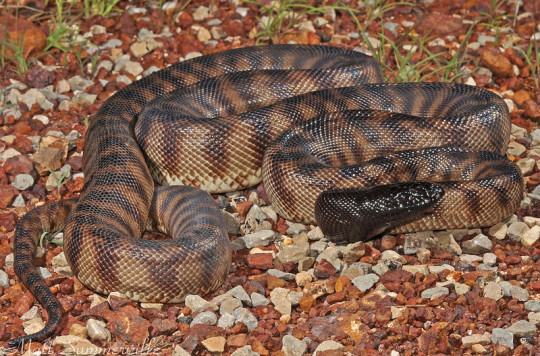
A black-headed python (Aspidites melanocephalus) at Daly Waters, Northern Territory, Australia
by Matt Summerville
#black headed python#pythons#snakes#reptiles#aspidites melanocephalus#aspidites#pythonidae#serpentes#squamata#reptilia#chordata#wildlife: australia#wildlife: oceania
80 notes
·
View notes
Text


Glad to see more of Aaron Blabey's books are getting movie adaptations. My man used to struggle, but now he is succeeding!
And he got more coming up.
#the bad guys#thelma the unicorn#aaron blabey#dreamworks movies#dreamworks#netflix movie#tbg#mr wolf#mr snake#mr shark#mr piranha#ms tarantula#diane foxington#the bad guys 2#australian author#australia#netflix
71 notes
·
View notes
Text
Beautiful Snake God For @darkandtwistedasmr ‘s ASMR Video!
Had so much make his body Shine✨
Thank you so much DATW for Teach me about Australian culture and gave me chance to draw him!!
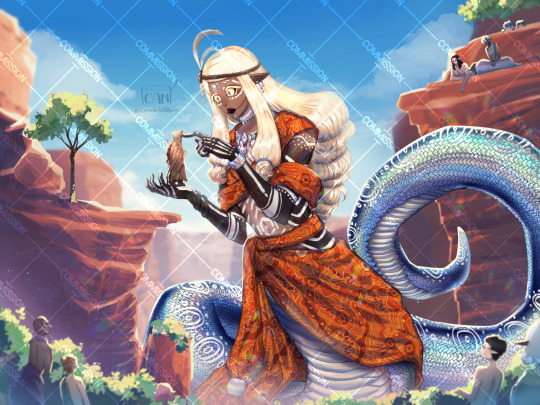
Meet Precious Snake god Here〜! →
youtube
#my art#dark and twisted whisper#dark and twisted whisper asmr#datw#monster boy#Lamia#Snake#Monster#Rainbow Serpent#God#Australia#Rainbow#asmr video#ASMR#asmr roleplay#commision art#Youtube
26 notes
·
View notes
Text

Arafura File Snake aka Elephant Trunk Snake (Acrochordus arafurae), family Acrochordidae, Howard Springs, NT, Australia
photograph by Greg Watson
#file snake#elephant trunk snake#acrochordus#acrochordidae#snake#reptile#herpetology#animals#nature#australia
232 notes
·
View notes
Text

Last years 2D madness, featuring the Stonewashed Bredli Python morph!
Also known as the Centralian Carpet Python, Bredli are more isolated in comparison to the rest of the Morelia species. They're named after Josef "Joe" Bredl, an Australian crocodile conservationist 🐊 The more you know!
2D アートに戻る、 今回はブレドリパイソンです!
ブレッドリはセントラリアンカーペットパイソンと呼ばれています。モレリア・ブレドリはより孤立している。
Josef "Joe" Bredl にちなんで名付けられました!
#art#アート#sciart#creative#illustration#解剖学#herpetology#snake#へび#python#reptile#爬虫類#snakesofinstagram#carpetpython#moreliabredli#australia#snakemorphs
64 notes
·
View notes
Text




Happy World Snake Day! 🐍 [July 16th]
#jensen ackles#misha collins#world snake day#jensen in australia 2019#misha in new orleans 2023#cas#bts spn#dean#4x06#tw snakes#i love snakes#except the deadly ones#i appreciate them from afar#can't believe misha didn't hold a snake in the serpessence video#snake size in picture is in no way meant as a representation of their personal snakes 😉#i mean there is evidence that they're both well off in that department#now if only they were together in a picture holding snakes 🙊
14 notes
·
View notes
Text
I'm supposed to be getting in shape for fire season but it's currently swooping season so the birds want to kill me so therefore the walking routes are compromised.
Also I won't be able to walk at the wetlands soon because the snakes will be coming out of hibernation and I had 3 close snake run ins in the past year.
Two Eastern Browns and one Tiger snake. One Eastern Brown I nearly stepped on, my foot was hovering over it before I realised it was there. Fortunately the snake didn't feel threatened enough to strike me and we both escaped unharmed.
The tiger snake actually tried to strike and was only a couple of inches from my crotch. I never legged it faster.
Don't get me wrong, I love snakes but both of those snakes are among the deadliest on the planet and I choose life.
#i always tell people that Australia isnt that bad or dangerous#then i say stuff like this and maybe this country is dangerous#then again im someone who always goes on dumb impulsive adventures#i woke up one morning and drove 9 hours so i could see snow as a day trip#i also drove 16 hours in one day into the outback and then home just so i could spend half an hour at the mad max museum#and the only reason i came face to face with a tiger snake was because i was catching yabbies in flood waters#both brown snakes were on my walking trail tho
11 notes
·
View notes
Text



A Big Fan of the Inland Taipan
Also known as the western taipan, the small-scaled snake, the fierce snake, or dandarabilla in local Aboriginal languages, the inland taipan (Oxyuranus microlepidotus) is a snake found in the arid regions of central eastern Australia. Specifically, it keeps to dry floodplains, dunes, and black soil plains where vegetation is sparse.
Throughout most of the day, the western taipan shelters in abandoned burrows or deep cracks in the ground, and only emerges early in the morning to hunt. Like all snakes, this species is a carnivore, and O. microlepidotus specializes in mammals; mainly rodents. Despite its narrow diet, the fierce snake is the most venomous reptile in the world, able to strike multiple times in quick succession. A single bite from this species is capable of killing 100 grown humans; however, unlike its coastal cousin, the inland taipan is notoriously shy and will only attack as a last resort. Because of its venomous reputation, adult inland taipans have no predators, though king brown snakes and perentie monitor lizard are known to prey on young.
The western taipan mates late in the winter and early spring, from August to November. This is the only time indivuals will seek each other out, and males have been known to spar when encountering each other. During mating, the male and female can remain intertwined for several hours, and afterwards part ways to seek out other mates. Females will locate abandoned animal burrows to lay a clutch of 11-20 eggs, but she does not remain to care for them. Eggs hatch about 2 months after being laid, and individuals can live for up to 15 years in the wild.
Though thin, weighing only 1-2 kg (2.2-4.4 lbs) the inland taipan is remarkably long, reaching up to 1.8 m (5.9 ft) in length. O. microlepidotus blends in well with its environment, being a dark tan or light greenish brown. This coloration can change depending on the season, becoming lighter or darker according to its surroundings. Along the thicker part of its body, individuals also sport dark scales in diagonal stripes.
Conservation status: The inland taipan is considered Least Concern by the IUCN, and is protected by law in Australia. This species can also be found in zoos and private collections. Primary threats include habitat loss and fragmentation, as well as mortality from cars.
If you like what I do, consider leaving a tip or buying me a ko-fi!
Photos
Ryan Francis
Stephan Zozaya
#Inland taipan#Squamata#Elapidae#Taipans#snakes#serpents#squamates#reptiles#deserts#desert reptiles#scrubland#scrubland reptiles#Oceania#Australia#central australia#animal facts#biology#zoology
155 notes
·
View notes